What truly makes a novel “great”? Is it the beauty of its prose, its unflinching realism, or its profound social impact? Literary critics, historians, and avid readers alike endlessly debate which works deserve the ultimate title of “greatest book ever written.” While opinions vary widely, certain novels consistently appear on such lists for their enduring influence and masterful storytelling.
Here are 12 novels that, for diverse and compelling reasons, are widely considered some of the greatest works of literature ever penned.
1. Anna Karenina by Leo Tolstoy (1878)
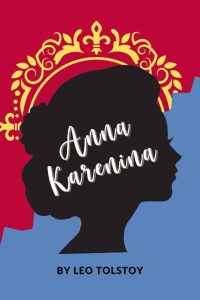
Leo Tolstoy’s monumental eight-part novel, first fully published in 1878, remains a pinnacle of Russian literature. Time magazine is among many publications that have lauded Anna Karenina as a masterpiece. It interweaves the tragic tale of Anna, a disenchanted housewife who embarks on an affair, with the philosophical struggles of landowner Konstantin Levin. Tolstoy skillfully explores themes of love, pain, and family within Russian society, populating his narrative with a large cast of realistically drawn characters. The novel was particularly revolutionary for its empathetic portrayal of women, vividly depicting the prejudices and social hardships they faced at the time.
2. To Kill a Mockingbird by Harper Lee (1960)
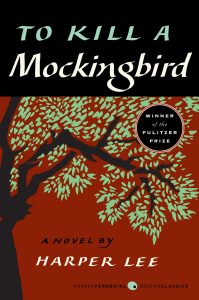
Harper Lee’s To Kill a Mockingbird, published in 1960, instantly became a classic and is often cited as a solitary masterpiece from one of the most influential authors. Through the innocent, perceptive eyes of young Jean Louise “Scout” Finch, the novel bravely confronts racism in the American South. Its unforgettable characters, particularly the principled lawyer and father Atticus Finch, served as powerful role models and shifted perspectives during a period of intense racial tension in the United States. The novel was awarded the Pulitzer Prize for Fiction in 1961 and adapted into an Academy Award-winning film in 1962, further cementing its cultural impact and influence on the American social landscape.
3. The Great Gatsby by F. Scott Fitzgerald (1925)
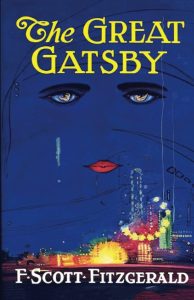
F. Scott Fitzgerald’s The Great Gatsby (published in 1925) is renowned as an essential text for teaching critical literary analysis. Narrated by young Nick Carraway, who befriends the enigmatic, newly wealthy Jay Gatsby after moving to New York City, the novel offers an intimate look into the Jazz Age of the 1920s. At the same time, it serves as a powerful critique of the “American Dream.” One of its most famous elements is its iconic cover art—a haunting face superimposed on a dark blue night sky above a glowing cityscape—an image symbolically echoed within the text itself.
4. One Hundred Years of Solitude by Gabriel García Márquez (1967)
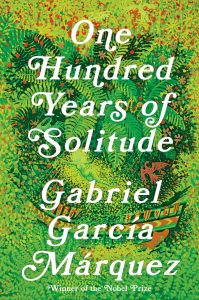
The late Colombian author Gabriel García Márquez’s most celebrated work, One Hundred Years of Solitude, was published in 1967. This fantastical novel chronicles seven generations of the Buendía family, from the founding of their mythical town Macondo to its eventual demise alongside the last of their descendants. A quintessential example of magic realism, the novel highlights the extraordinary in the mundane while presenting mystical elements as commonplace.
Márquez masterfully demonstrates the enduring power of myth and folklore in shaping history and Latin American culture. The novel earned Márquez numerous accolades, paving the way for his Nobel Prize in Literature in 1982 for his entire body of work, with One Hundred Years of Solitude often hailed as his crowning achievement.
5. A Passage to India by E.M. Forster (1924)
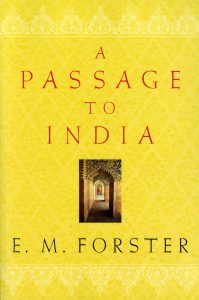
E.M. Forster’s A Passage to India, published in 1924 after his extensive travels in the country, explores complex relationships during the British Raj. The story centers on Muslim Indian doctor Aziz and his friendships with English professor Cyril Fielding and visiting schoolteacher Adela Quested. When Adela accuses Aziz of assault during an excursion to the Marabar caves, tensions between the Indian community and the colonial British community erupt. The novel meticulously examines the possibility of genuine connection and friendship between English and Indian people despite profound cultural differences and imperial conflict. Its vivid descriptions of India’s landscape and nature, imbued with powerful figurative meaning, solidify its place as a literary masterpiece.
6. Invisible Man by Ralph Ellison (1952)
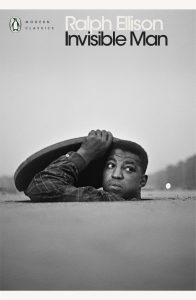
Often mistakenly associated with H.G. Wells’s similar-sounding novella, Ralph Ellison’s Invisible Man (published in 1952) is a landmark novel exploring the complexities of African American identity. The unnamed narrator, who perceives himself as “socially invisible,” recounts his journey from the South to college and then to New York City. At each stage, he confronts severe adversity and discrimination, navigating various jobs, relationships, and questionable social movements with a sense of disorientation. The novel is celebrated for its surreal and experimental style, which deeply explores the symbolism surrounding African American identity and culture. It earned the U.S. National Book Award for Fiction in 1953.
You may also like:
- 7 Must-Read Fiction Books for Every Reader
- Top 10 Best Detective Novels Series of All Time
- Top 10 Best Selling Crime Novels You Should Try
7. Don Quixote by Miguel de Cervantes (1615)
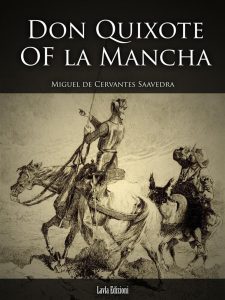
Miguel de Cervantes’s Don Quixote, widely considered the most influential work of Spanish literature, was first published in full in 1615. This iconic novel tells the story of a man who, consumed by chivalric romances, renames himself “Don Quixote de la Mancha” and sets off to revive the custom of knighthood and become a hero. The character of Don Quixote has become a global archetype, profoundly influencing countless works of art, music, and literature. The novel’s impact is so significant that it even inspired the word “quixotic,” defined as “foolishly impractical especially in the pursuit of ideals; especially: marked by rash lofty romantic ideas or extravagantly chivalrous action.”
8. Beloved by Toni Morrison (1987)
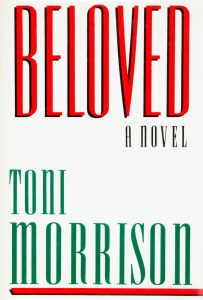
Toni Morrison’s haunting and spiritual novel, Beloved, published in 1987, delves into the profound trauma of slavery. It tells the story of Sethe, an escaped enslaved woman living in Cincinnati, Ohio, in 1873, haunted by the guilt and emotional pain of having killed her own child, Beloved, to spare her from a life of bondage. A spectral figure named Beloved appears in the characters’ lives, embodying the family’s anguish and forcing them to confront their past. The novel received immense praise for its exploration of the psychological effects of slavery and the crucial role of family and community in healing. Beloved was awarded the Pulitzer Prize for Fiction in 1988.
9. Mrs. Dalloway by Virginia Woolf (1925)
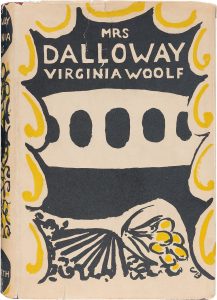
Perhaps the most formally innovative novel on this list, Virginia Woolf’s Mrs. Dalloway (published in 1925) meticulously chronicles a single day in the life of British socialite Clarissa Dalloway. Using a sophisticated blend of third-person narration and the internal thoughts of various characters, the novel masterfully employs a stream-of-consciousness style. This technique offers a deeply intimate and revealing glimpse into the characters’ minds, with the narrative driven more by internal reflection than by plot.
Their thoughts encompass past regrets, struggles with mental illness and post-traumatic stress from World War I, and the pervasive effects of social pressures. The novel’s unique style, subject matter, and temporal setting solidify its status as a highly respected and enduring work of literature.
10. Things Fall Apart by Chinua Achebe (1958)
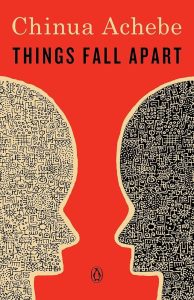
While the Western literary canon often overlooks exceptional works from outside North America and Europe, Chinua Achebe’s Things Fall Apart, published in 1958, stands as a celebrated work of Nigerian literature that has achieved global recognition despite initial biases.
The novel follows Okonkwo, an Igbo man, detailing his family, his Nigerian village, and the devastating impact of British colonialism on his homeland. It is a prime example of African postcolonial literature, a genre that has grown in prominence since the mid-20th century as African voices have shared their often untold stories of imperialism from the perspective of the colonized. Things Fall Apart is a frequently assigned text in world literature and African studies courses.
11. Jane Eyre by Charlotte Brontë (1847)
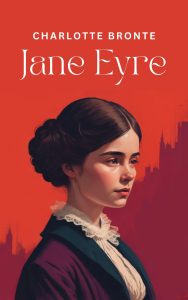
Charlotte Brontë’s Jane Eyre, another widely studied novel, was initially published in 1847 under the male pseudonym Currer Bell to conceal the author’s gender. Fortunately, the literary world has evolved significantly since then, and Brontë now receives full credit for this groundbreaking novel about women’s individualism.
At a time when female authors felt compelled to hide their identities, Jane Eyre presented a powerful narrative of self-reliance. The eponymous character rises from an orphaned and impoverished state to become a successful and independent woman. Combining elements of both Gothic and Victorian literature, the novel revolutionized the form by emphasizing Jane’s internal growth and sensibility through psychological depth.
12. The Color Purple by Alice Walker (1982)
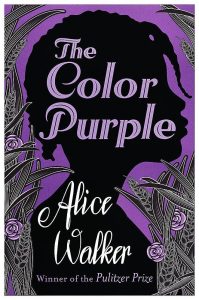
Though the epistolary novel (told through letters) peaked before the 19th century, Alice Walker revitalized the form with her 1982 novel, The Color Purple, which earned both a Pulitzer Prize and a National Book Award. Set in the post-Civil War American South, the novel follows young African American girl Celie into adulthood through her letters to God and her sister Nettie. Celie endures sexual abuse from her father and later her husband, chronicling her own suffering and resilience, as well as the experiences of her friends and family.
The novel powerfully explores themes of sexism, racism, gender, sexual orientation, and disability through its cast of disadvantaged characters who, over time, learn to reclaim their lives. The story was adapted into an Academy Award-nominated film in 1985, which, despite widespread critical acclaim, famously received no awards from its 11 nominations.